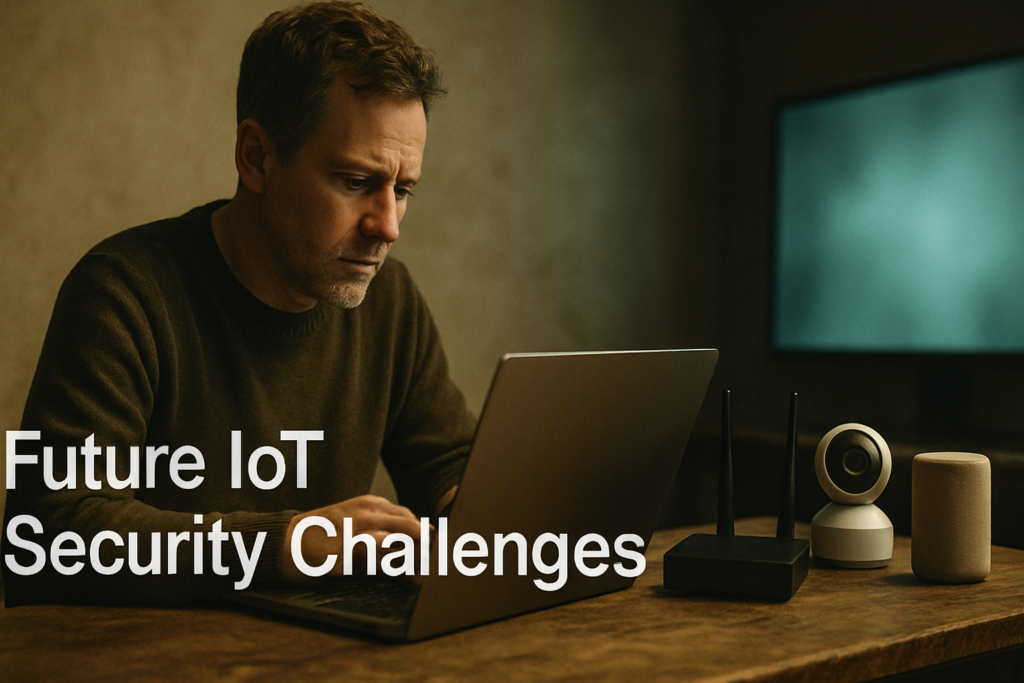In today’s interconnected world, the Internet of Things (IoT) has revolutionized how we live and work. However, with this convenience comes the critical need for robust security measures to protect our data. As an expert in the field, I’ll guide you through the best practices for securing IoT devices to safeguard your sensitive information.
From smart homes to industrial systems, IoT devices are vulnerable to cyber threats that can compromise personal privacy and organizational security. In this article, I’ll share essential tips and strategies to ensure your IoT devices are shielded from potential risks, giving you peace of mind in an increasingly digital landscape. Let’s delve into the world of IoT security and empower you to take control of your data protection efforts.
Understanding IoT Devices
IoT devices, short for Internet of Things devices, are everyday objects embedded with sensors, software, and other technologies to connect and exchange data over the internet without human intervention. Think of smart thermostats, wearable fitness trackers, or even connected light bulbs.
These devices are designed to make our lives easier by automating tasks and providing convenience, but they also come with security risks. As an IoT user, understanding how these devices work and communicate is crucial to implementing effective data protection measures. By knowing the basics of IoT device functionality, I can better secure these devices against potential cyber threats.
Importance of Data Protection in IoT
Securing data in IoT devices is vital in today’s interconnected world. It ensures sensitive information is shielded from cyber threats, preserving personal privacy and organizational security. As an expert in the field, I provide essential strategies to safeguard IoT devices, empowering readers to strengthen data protection efforts.
- Unauthorized Access: Hackers can exploit vulnerabilities to gain access to IoT devices and intercept data.
- Data Breaches: Sensitive information stored in IoT devices can be exposed or leaked, leading to privacy breaches.
- Malware Attacks: Malicious software can infect IoT devices, compromising data integrity and device functionality.
- Lack of Encryption: Data transmitted between IoT devices may be unencrypted, making it susceptible to interception.
- Denial of Service (DoS) Attacks: Attackers can overwhelm IoT devices with excessive requests, disrupting their operations and data flow.
Best Practices for Securing IoT Devices
Securing IoT devices is crucial in today’s digitally interconnected environment to protect sensitive data and prevent cybersecurity threats. As an experienced professional in the field, I understand the significance of implementing effective strategies to enhance data protection for IoT devices. Below are key best practices to fortify the security of IoT devices and mitigate potential risks:
Implement Device Authentication:
Use strong authentication methods like biometrics or two-factor authentication to ensure only authorized users can access IoT devices and data.
Regularly Update Firmware and Software:
Keep IoT device firmware and software up to date to patch vulnerabilities and protect against known security issues.
Enable Encryption for Data Transmission:
Encrypt data both at rest and in transit to safeguard sensitive information from unauthorized access during communication.
Establish Network Segmentation:
Divide IoT devices into separate networks to contain potential breaches and limit access to critical systems and data.
Monitor Device Activity:
Utilize security tools to monitor device behavior, detect anomalies, and respond promptly to any suspicious activities or unauthorized access attempts.
Secure Physical Access:
Physically secure IoT devices to prevent tampering or unauthorized access, especially for devices located in public or uncontrolled environments.
Conduct Regular Security Audits:
Perform routine security audits to assess the effectiveness of security measures, identify vulnerabilities, and take proactive steps to enhance device security.
By adhering to these best practices, individuals and organizations can significantly improve the overall security posture of IoT devices and protect valuable data from potential cyber threats.


 Leeyo Mattisonell, the founder of The Code Crafters Hub, is a trailblazer in the realm of software development and technology. With a passion for advancing the field, Mattisonell established The Code Crafters Hub as a premier destination for both software professionals and enthusiasts. His vision was to create a platform that not only delivers the latest industry news but also offers valuable insights into web and game development. Under his leadership, the hub has become a vital resource for understanding emerging technologies, including the Internet of Things (IoT) and cybersecurity trends. Mattisonell’s dedication to providing cutting-edge content ensures that the platform remains at the forefront of the ever-evolving tech landscape.
Mattisonell’s commitment to excellence is evident in the comprehensive and timely updates featured on The Code Crafters Hub. By focusing on dynamic web development techniques, game development innovations, and practical cybersecurity tips, he has positioned the hub as an essential tool for developers at all stages of their careers. Located in Warren, MI, and operating from 9 AM to 5 PM, the hub reflects Mattisonell’s dedication to fostering a knowledgeable and secure tech community. His leadership continues to drive the platform’s success, making it an invaluable resource for anyone looking to stay ahead..
Leeyo Mattisonell, the founder of The Code Crafters Hub, is a trailblazer in the realm of software development and technology. With a passion for advancing the field, Mattisonell established The Code Crafters Hub as a premier destination for both software professionals and enthusiasts. His vision was to create a platform that not only delivers the latest industry news but also offers valuable insights into web and game development. Under his leadership, the hub has become a vital resource for understanding emerging technologies, including the Internet of Things (IoT) and cybersecurity trends. Mattisonell’s dedication to providing cutting-edge content ensures that the platform remains at the forefront of the ever-evolving tech landscape.
Mattisonell’s commitment to excellence is evident in the comprehensive and timely updates featured on The Code Crafters Hub. By focusing on dynamic web development techniques, game development innovations, and practical cybersecurity tips, he has positioned the hub as an essential tool for developers at all stages of their careers. Located in Warren, MI, and operating from 9 AM to 5 PM, the hub reflects Mattisonell’s dedication to fostering a knowledgeable and secure tech community. His leadership continues to drive the platform’s success, making it an invaluable resource for anyone looking to stay ahead..
